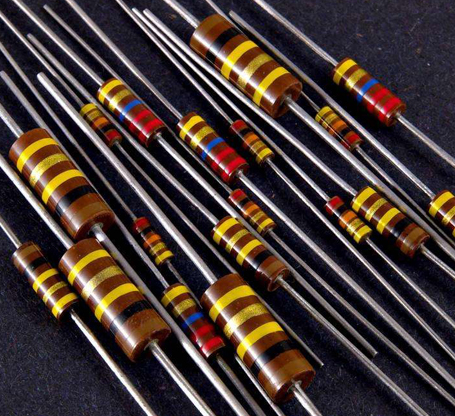Within the realm of film resistors lies the carbon film resistor. Its creation involves a meticulous process where hydrocarbons, under high temperature and vacuum conditions, thermally decompose. This results in crystallized carbon that forms a thin layer of carbon film on a ceramic skeleton. Intricacies in its manufacture, such as adjusting the carbon film's thickness and meticulously notching the film, allow for precise control of the resistor's value. Typically, these resistors boast a protective coating - a veneer of green or orange paint - safeguarding their exterior.
Carbon film resistors, diverse in their make, cater to various needs and exhibit distinct characteristics. Beyond the standard types, specialized varieties exist. For instance, RTL measuring carbon film resistors are integral in different measuring instruments. These are designed for specific frequency ranges - high frequency or even ultra-high frequency applications. Examples include the rod-shaped RTCP and the button type RTCP-Q, both tailored for ultra-high-frequency use.

The characteristics of carbon film resistors are multifaceted:
① Stability is a hallmark; voltage fluctuations barely affect their resistance, and they exhibit a negative resistance coefficient.
② Excelling in high-frequency performance, they are ideal for creating high-frequency and ultra-high-frequency resistors.
③ They produce minimal inherent noise electromotive force, typically under 10μV/V.
④ The resistance spectrum is broad, ranging generally from 2.1Ω to 10MΩ.
⑤ Rated power varies, encompassing 1/8W, 1/4W, 1/2W, 1W, 2W, 5W, to 10W.
⑤ Precision is key, achieved by cutting butterfly patterns on the film for fine adjustments.
⑦ Pulse load capacity is robust, offering excellent pulse adaptability.
③ Their fabrication is straightforward, economical in cost, rendering them affordable, albeit larger in size.
⑨ Application-wise, they are incredibly versatile, suitable for AC, DC, and pulse circuits.
